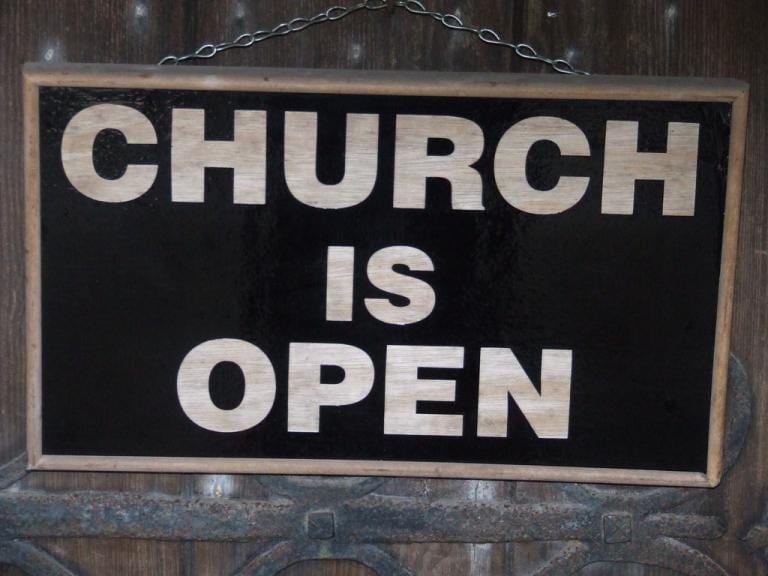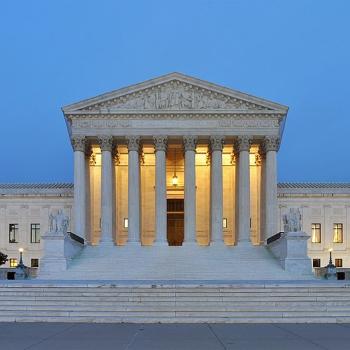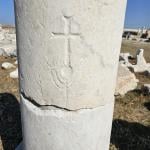Our state, Oklahoma, is “opening up” from the coronavirus shutdown so we were able to go to church for the first time in seven weeks!
We still had to be socially distanced, which was awkward. We couldn’t sing, since that activity projects droplets from the lungs. The liturgy was somewhat truncated and it had to be spoken, not chanted.
But how good it was to be there! To be absolved! To receive the Sacrament of Christ’s Body and Blood! To be immersed in God’s Word! To see everyone again, though at a distance!
Though we had been bearing up well during the quarantine, going to church was a big boost to our mood, our morale, and our sense of well-being.
I had mentioned here that our county was hard hit by the coronavirus. A few weeks ago, Oklahoma released a more detailed breakdown of the cases by city. It turns out, nearly all of our county’s cases were concentrated in a much larger municipality, which has had a total of 48 cases and 7 deaths. But our little community has had only 2 confirmed cases, no deaths, and 2 recoveries. Even though we had drive-through testing at our hospital, that number has not changed for weeks. In fact, our county total has just gone up by one over that time.
Still, we are social distancing, wearing masks, not going out, and sheltering in place. It’s interesting how our country, indeed most countries, is approaching this pandemic. Instead of identifying the sick people and putting them in quarantine–the usual practice through the centuries–we are putting everyone in quarantine, the well along with the sick. We treat everyone the same, with our restrictions and our bailouts, regardless of how they are affected by the virus.
Our governor, Kevin Stitt, is getting criticized in some circles for relaxing the restrictions too early. He and the other governors who are trying to get their states going again are not really following President Trump’s guidelines of waiting for two weeks of downward epidemic numbers before starting phased re-openings. Gov. Stitt made his decision based on the drop-off of the demand for hospital facilities. We have plenty of Intensive Care Units. Putting it that way sounds kind of grim, but it’s pragmatic.
Since increased testing means more discoveries of cases, and since death reporting varies so much from place to place–with some counting only tested COVID-19 mortalities, some counting “presumed” cases, some adding deaths from related causes and some not, and some adding into the total deaths from weeks ago that have been re-classified as COVID-related–it’s hard to know where we stand with this epidemic.
Already the media is trumpeting increases in new cases as evidence that the states relaxing their restrictions have made a deadly mistake. But, as A. G. Hamilton points out, the data they cite is highly misleading:
(1) Given the incubation period and a lag in testing, new cases that are identified on a certain day are unlikely to have any relationship to policies implemented days earlier.
(2) “New cases” is a very misleading metric because it does not account for increases in testing. The rate of positive tests in Texas has declined significantly.
Mainstream outlets have attempted to tie new cases and deaths to recent re-opening actions in Florida, Georgia, and Texas, despite it being clear that any spike in cases or deaths would not be apparent for weeks after such policy changes. Such actions could lead to a spike in new cases, but trying to tie them to those seen right now is clearly incorrect.
More revealing is the percentage of tests that turn out to be positive for COVID-19, and Hamilton cites data and gives a chart showing that those numbers are going down.
But we’ll have to see. Maybe Oklahoma and these other states are opening too soon. But we cannot keep the economy shut down for long. Just these seven weeks have been catastrophic. At some point, we’ll have to give up the effort and accept the consequences.
We cannot afford to wait the year or 18 months or more until we have a vaccine. We may not ever get a vaccine. The World Health Organization (WHO) has said that “there is no evidence” that having antibodies for the virus confers immunity. “No evidence” simply means that science has come to no determination one way or the other, another example of how little we know about this virus. There have reportedly been cases of re-infection, with some individuals testing positive, then negative, then positive again. But that might be due to the inaccuracy of the tests, which is another reason why we cannot look to testing as the pre-requisite for removing the restrictions. The point is, if antibodies do not confer immunity to COVID-19 and since vaccines work by causing the body to produce antibodies, doesn’t that mean that a COVID-19 vaccine would be impossible? (Someone please correct me if I’m wrong. Please! I hope I am!)
We may just have to learn how to live with–and die with–the coronavirus.
Being able to go to church will help with that.
Photo: Church Is Open
cc-by-sa/2.0 – © Keith Evans – geograph.org.uk/p/4297841














